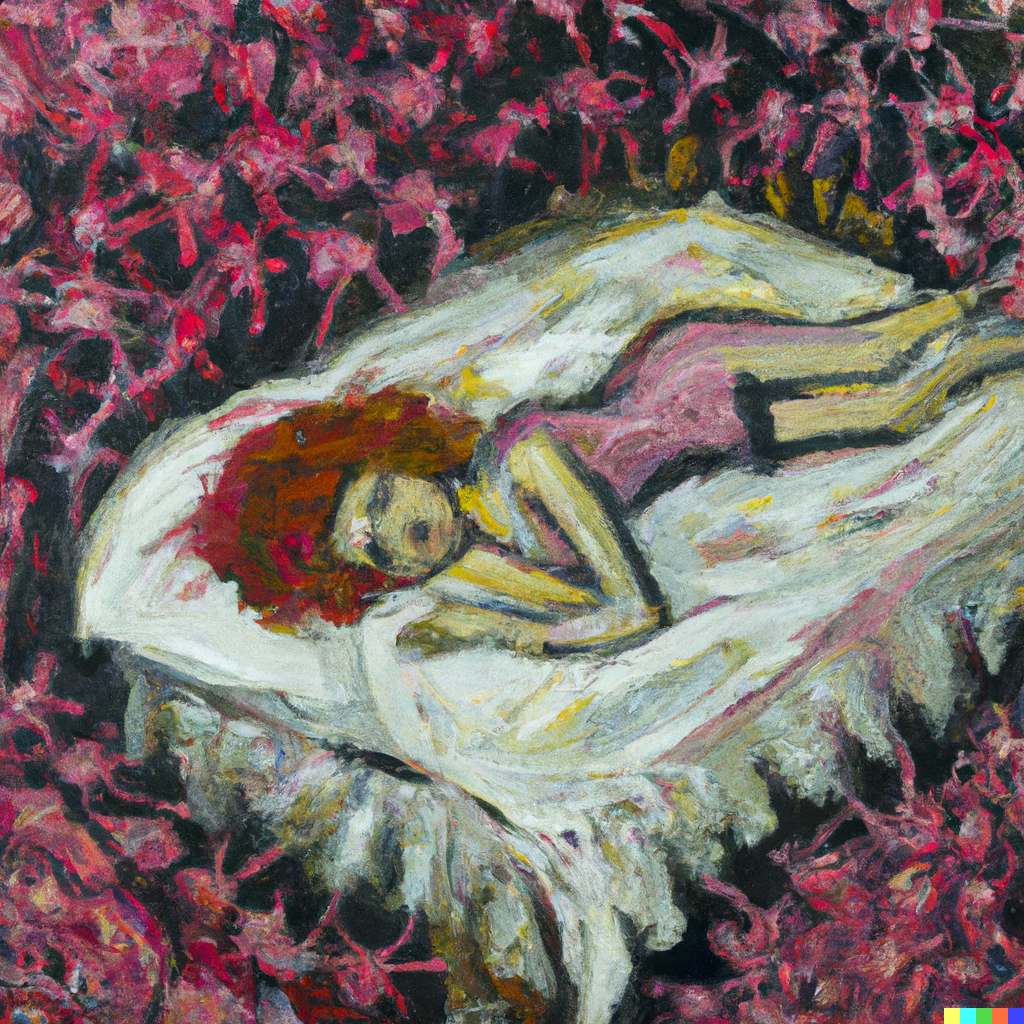a failure of psychotherapy

As western society transitioned from rural communities to modern industrial settings in the nineteenth century, psychotherapy developed to address the psychological problems that emerged (McLeod, 2019). Industrialization caused shifts in social structures like family and community as science gradually replaced organised religion and individual lives became increasingly personal (Nelson & Torrey, 1973). People’s futures became less formulaic because a wider pool of choices became available to them, yet with decreasing direct communal guidance, this only led to dilemmas as individuals planned and assessed their lives. Although the problems people faced varied, the context within which they arose was that of the social uncertainties of a capitalist society (Cushman, 1995). In such bureaucratized systems, people mould themselves to fit specific niches in the economic strata (McLeod, 2019), which may interfere with individual identity and aspirations. Yet instead of addressing this exploitation of people, particularly those belonging to marginalised groups such as women, psychotherapy focused its attention on finding fault within individual psyches (McLeod, 2019). Even today, a few forms of psychotherapy like narrative therapy and systemic family therapy stand out for acknowledging the contribution of dominant socio-cultural discourses in the emergence of emotional distress among women (Bruner, 2003; Dallos & Draper, 2015). Traditional psychotherapy, on the other hand, reinforces society’s negative attitudes towards women and further hesitates to illuminate the harmful power dynamics between men and women (McLellan, 1999). By doing so, psychotherapy’s objective of promoting healing is downplayed in its failure to pursue justice, and as McLellan (1999) writes, “A therapy which allows itself to be used in support of injustice is not therapy at all” (336). This implies that mainstream therapies indeed exist to appeal to and affirm the status quo, of whom women are marginalised along with other groups such as ethnically black people.
By employing my experience as a Tanzanian woman, this essay upholds McLellan’s (1999) analysis of traditional therapy as having failed women, particularly by obscuring the social dynamics behind women’s dissatisfaction. In this text, I detail how my dilemma on when and how to manage marriage aspirations remains unresolved even after a full year of experiencing both psychodynamic and cognitive behavioural therapies. This achieves the goal of analysing McLellan’s (1999) article while simultaneously reflecting on the therapeutic processes I have undergone, which efficiently expose the role of therapeutising mystifications in maintaining harmful “truths” in society. Lastly, I propose that instead of turning to radical feminist views like ending therapy altogether, a more effective course of action would be the establishment of feminist therapies that situate and solve individual problems up against society’s dominant discourses.
Mystifications in the Tanzanian Context
McLellan (1999) characterises mystification as the deliberate concealment of dominant oppressive views by presenting them as objective truths. Deceit, lies, and half-truths are used to create and present a false reality that people in a given society are expected to simply uphold. In Tanzania, women are often encouraged to get married and have children as early as possible, preferably before their mid-20s. Misunas et al. (2021) found that, in Tanzania, “31% of women aged 20–24 years were married by the age of 18 years” (548). Adolescent marriages remain an issue in my country because there are sophisms that marriage is the sole means to improve social status and decrease the risk of poverty and premarital pregnancies for women (Schaffnit et al., 2021). Under such mystifications, girls like me grow up observing child marriages, early marriages and even forced marriages, yet these occurrences appear normative because it is all we have known since birth. This demonstrates what is known as socialisation, a form of learning by acquiring established orientations of one’s functional role, which promotes one’s stability in her society (Guhin et al., 2021). When a mystification operates at the level of socialisation, it falls under fundamental mystifications, which often remain unchallenged even in therapy. This is especially true when the therapist and the client stem from the same or similar cultural backgrounds, as is the case with me and the therapist I describe in the following sections.
Another form of mystification occurs through backlash, as a response to systemic issues in society but with false analyses of the actual state of the progress made. An example of backlash mystification is the post-feminism lie, which is the myth that feminism is over because men and women now have equal opportunities (McLellan, 1999). This rhetoric usually employs generalised statements referring to, say, the fact that roughly a century ago, women across the world had no voting rights, but today, women everywhere, even in Tanzania, do (Rome, 2022). Although this is an achievement on the part of women’s rights movements, feminism still has work to do in, for instance, ensuring equal enrollment levels of girls and boys in Tanzanian schools (Mollel & Chong, 2017). On paper, Tanzanian children have equal access to education, yet as Iddy (2019) reports, there are still societal narratives that discourage parents from investing in girls’ education because marriage is hailed as the most ideal outcome for Tanzanian women. Growing up in Dodoma, the capital of Tanzania, I was constantly told that even when offered equal rights to education, women deliberately pursue marriage over academic interests because women’s true fulfilment is found in mothering. Having a therapist whose socio-cultural upbringing was also abounding in such backlash mystifications set the scene for our conversations which emphasised McLellan’s (1999) argument that, “Post-feminism mystification provides mainstream therapy with another excuse to blame women for the distress their oppression is causing them” (333). My therapy sessions involved little to no mention of the real reasons why women run towards marriage, which according to Hollos & Larsen (2008) is because unmarried women and women without children in Tanzania face disrespect and stigmatisation in their communities. Instead, my therapist and I focused on my perspective-taking and cognitive flexibility in engaging with the observations I made about my community. This is contrary to McLellan’s proposition of therapy’s role, which is “to begin a process of demystification so that the way is opened up for healing to take place” (332).
My Therapeutic Experience as an Agent of Mystification
When I first presented my dilemma to my therapist, I told her that I was contemplating getting into a relationship but I was concerned that my doing so would encourage conversations from my family members about my getting married in the next year or two. Although marriage is something I aspire to experience, my current priority is to complete a post-doctoral degree (PhD). Yet, a woman pursuing a PhD is almost unheard of in my close community because the most educated woman in my paternal and maternal lines has completed only a bachelor’s degree, that is, one of my elder sisters. My other two sisters already have children, while only 26 and 28 years old. From conversations with them and my high school classmates who are now either married, with kids, or both, it is obvious that these women have gotten bored of solely being housewives and not pursuing something outside of mothering. Hence, it has become apparent to me that a majority of the early marriages around me are ending well within the first five to seven years leading to discontentment among the wives. How am I supposed to deal with the tension of desiring to date successfully into marriage while also fearing the possibility of an unhappy marriage if that happens in the next year or so, which is earlier than I desire?
On presenting this predicament to my therapist, she asked, “Well, why do you hold this belief that women who marry early become unhappy?”. By posing the question in this manner, I suppose my therapist was teasing out multiple cognitive biases at play in my psyche, such as negativity bias, when negative events have a greater psychological impact than positive events (Rozin & Royzman, 2001), and confirmation bias, when new information is sought out with an underlying goal of affirming pre-existing beliefs (Nickerson, 1998). The former would be evidenced by the fact that I had been deeply affected by hearing negative accounts of early marriages and that I had internalised the message that early marriages lead to discontentment. While the latter would have been the guiding force behind my collection of even more stories of dysfunctional marital relationships, leading to a greater unenthusiastic connotation on early marriages. Essentially, my therapist’s question was meant to elicit self-reflection as to the origin of my “belief” that early marriages are unhappy marriages. Therefore, her question implied that my ambivalence towards young romantic relationships had everything to do with my way of looking at things, which situated my dilemma in the individual context. This is what McLellan (1999) criticised, writing, “The task of the [traditional] therapist is to help individuals discover what they are doing to cause their own dysfunction/disenchantment/unhappiness, and to help them develop strategies whereby they can adjust more easily to the situations causing them distress ”(325). Traditional therapies teach that this is a means of empowering a client because although it implies that the source of the problem hides within a client, it also ascribes agency in empowering the client to adjust her situation for the better. Yet adjustment can only do so much in a social context similar to mine, where hundreds of thousands of girls sacrifice their pursuit of fulfilling lives for the promise of a “secure” life in marriage. This is why other forms of therapy such as feminist therapies demand change instead of mere adaptation to the negligence of true culprits behind women’s issues in society (Jasper, 2015).
Even more, traditional therapies do not create room for blame, which as McLellan writes, in conventional therapy, “Blame is not encouraged, unless it is self-blame” (325). Even when the blame is targeted towards the actual birthplace of women’s dissatisfaction, traditional therapy still intends to distract the client from the oppressive forces at play in her troubles. In my case, for instance, I suggested to my therapist that what I had shared with her was not simply a belief that I held, but rather it was what I had discerned from personal experiences with family members and colleagues who had gotten married in their early 20s. Most of the young women I spoke to even shared regrets surrounding the time they “wasted” schooling because eventually, they ended up getting married without putting their academic knowledge to use. This is the same kind of thinking that discourages parents from investing in girl child education in Tanzania, where only 33% of girls make it past their primary school education (World Bank, 2022). When parents operate in a society where girls end up being pressured into housewifery, then parents see little need to encourage their daughters to pursue higher levels of education, and instead, more and more girls are pressured into giving up their academic pursuits for marriage (Mollel & Chong, 2017; Iddy, 2019). Yet this frustrates the young women because there is more to them than raising children and waiting for their husbands to take care of their every need. This, I suppose, is the reason behind the unhappiness that a lot of young married Tanzanian women feel and also, a factor at play in my fear of pursuing a relationship that may interfere with my academic plans.
Nevertheless, I was unable to articulate these thoughts in my therapy sessions because there was simply no space for me to do so as my thoughts were not mainstream enough for my therapeutic context. McLellan (1999) warns of the dangers of entertaining therapies that prostitute themselves to serve mainstream discourses. An illustration of this occurred when my therapist asked me to evidence my observations that a majority of my married peers feel trapped in dysfunctional marriages. I explained to her that, from personal anecdotes, two main factors play into their unhappiness: violence and infidelity, both perpetrated by their husbands. Further, I complained about how this ill treatment often goes unpunished because of traditional values that protect men from being held accountable for actions that are deemed “natural” to them, such as violent outbursts. McLellan (1999) testifies, “The prevailing attitude in such a culture of violence is: ‘Human nature (male) is violent and you can’t change human nature’” (331). Only a handful of people see the ignorance in adhering to this masculine reality, while most have unfortunately internalised these views that sympathise with men’s “weaknesses”. Laisser et al. (2011) share a quote by a Tanzanian woman saying, “We annoy our husbands with our behaviors and sometimes we deserve to be beaten. I hear some women from certain tribes provoke men to beat them, feeling that beating is part of love…” (5). This exposes how, in several Tanzanian tribes like the Kurya and Maasai, men simply commit intimate partner violence and there are minor to no societal repercussions. The same goes for infidelity, where Keefe’s (2019) study found that more than half of the women interviewed had even grown accustomed to marital infidelity. Incidentally, when I shared these concerns with my therapist, she described to me how “realistically speaking”, men have a harder time controlling their sexual urges because of “hormones”. She further described how most Tanzanian, and in fact, African tribes used to be polygamists before colonialism, which may explain why some men are having trouble staying faithful to their partners. Essentially, as McLellan (1999) describes, traditional therapists, tend to adopt the role of “helping disillusioned and emotionally-deprived women adjust to the ‘truths’” (331). Yet this strategy is disempowering because it is like saying, “Boys will be boys!”, so “Try to understand and try to forgive” (331), so “Women, first mystified and deceived by society, are often mystified and deceived again by therapy” (331).
This reveals yet another aspect that McLellan (1999) details, “there is the effort given to providing a legitimation for society’s mystification” (335) as detailed above in the notion that men just have a harder time dealing with their sexual urges. It is these sorts of sentiments that explain why there is also a harsh victim-blaming culture in my country even towards female victims of sexual assault (Muganyizi et al., 2010). Further, these sentiments that encourage women to be more “accepting” of men, only maintain and even encourage the increase of sexual violence against women of all ages (Abeid et al., 2014), which leaves women powerless instead of empowered. Ultimately, this maintains the oppressive discourses held by the status quo, in which men get away with crimes while women remain humiliated. This emphasises and maintains harmful socio-political power dynamics between men and women, which remain unchecked unless there is an intervention by more feminist therapies that unashamedly turn to the real source of women’s hurts. McLellan (1999) declares, “When therapy is concerned with truth and justice, demystification occurs” (334). And with demystification, comes true healing.
The Promise in Feminist Therapies
There are opposing views on how to resolve the aforementioned failures of conventional psychotherapy. On one hand, McLellan (1999) states, “there are those who claim that the term ‘feminist therapy’ is inherently a contradiction and who, as a consequence, call on all feminists to reject therapy absolutely” (329). This is a radical feminist stance, which I do not support because it does not solve the main issues feminism has with traditional therapy. According to McLellan (1999), radical feminists propose that one cannot support both feminism and therapy because the goals of the two institutions oppose each other. While feminism seeks to save women from the oppression they face in society, therapy seeks to reinforce this oppression by encouraging women to look inwards for someone to blame. Although the overall sentiment behind this rejection of therapy is sensible, it still does not explain how renouncing therapy is better than reconciling it with feminism. I propose that completely ridding women of therapy has more harm than benefits in that, eventually, it leaves women with fewer logical avenues to unravel their emotional pains. This creates larger problems for women who face, for instance, domestic violence and then have to suffer in silence, thus leading to immense psychological strain that may induce post-traumatic stress disorder and depression (Igwe, 2016). Certainly, these implications of entirely abandoning therapy can be avoided.
One way of doing so is by expanding on what narrative therapists are already doing. McLellan (1999) notes, “narrative therapy is, at least, prepared to acknowledge that oppression exists and is often at the root of people’s problems” (328). This is a step in the right direction because recognizing power dynamics that repress women’s ability to thrive serves as fertile ground for demystification. The demystification happens through the therapist’s recognition of the oppressors followed by delegitimization of the oppression that the client is experiencing. Therefore, instead of asking the client to turn inwards and assess themselves, alternative feminist therapy can create space for women to vent their frustrations with their experiences in society. However, the assigning of the blame should be handled objectively by the therapist as a listener to ensure that women take accountability for their suffering when necessary. This will help women in the pursuit of the truth, which, as cliché as it may sound, will set them free.
Even more central to this alternative therapy will be the pursuit of justice. One criticism of narrative therapy by McLellan (1999) is that “The aim of this therapy seems to be empowerment through deconstruction rather than the more political aim of justice through demystification and insistence on change.” (328). So the pursuit of truth in therapy is not enough unless it is followed by justice-seeking. Alternative feminist therapies will make this aim easier for therapists because they will have been trained to think independently without relying on mainstream discourses. This will enable therapists to avoid the trap of covering up crimes and therapeutising discrimination, violence, and other forms of maltreatment. A practical way in which justice can be pursued is by including constitutional rights training for therapists so that by the time one becomes a therapist, he/she will be equipped with the right resources to offer their clients in case a client exposes a crime or injustice they have experienced. Further, unlike traditional therapists, I propose that feminist therapists should be allowed to encourage their clients to take action when needed. Advice-giving is traditionally prohibited in therapy, but is it just to remain neutral after a client expresses, say, marital rape?
All in all, there are even more principles of conventional therapy that we need to unlearn yet there is hope in feminist therapies, which with constant re-evaluation will achieve more positive and life-affirming results for women. An even greater hope is that feminist therapies will inspire alternative therapies for other marginalized groups, and with time, more people will be seen and heard by mental health professionals, therefore easing the burden of society’s oppression on marginalized communities.
Works Cited
Abeid, M., Muganyizi, P., Olsson, P., Darj, E., & Axemo, P. (2014). Community perceptions of rape and child sexual abuse: a qualitative study in rural Tanzania. BMC International Health and Human Rights, 14(1), 1-13. Retrieved from: https://bmcinthealthhumrights.biomedcentral.com/articles/10.1186/1472-698X-14-23
Bruner, J. (2003). Self-making narratives. In Autobiographical memory and the construction of a narrative self. 225-242. Psychology Press. https://doi.org/10.4324/9781410607478
Cushman, P. (1995) Constructing the Self, Constructing America: A Cultural History of Psychotherapy. Reading, MA: Addison-Wesley.
Dallos, R., & Draper, R. (2015). An Introduction to Family Therapy: Systemic Theory and Practice. UK: McGraw-Hill Education
Guhin, J., Calarco, J. M., & Miller-Idriss, C. (2021). Whatever happened to socialization? Annual Review of Sociology, 47, 109-129. Retrieved from: https://www.annualreviews.org/doi/pdf/10.1146/annurev-soc-090320-103012
Hollos, M., & Larsen, U. (2008). Motherhood in Sub-Saharan Africa: The social consequences of infertility in an urban population in northern Tanzania. Culture, Health & Sexuality, 10(2), 159-173. https://doi.org/10.1080/13691050701656789
Iddy, H. (2019). Changing perceptions of the value of girls’ secondary education among the parents in rural Tanzania. International Journal of Qualitative Studies in Education, 1-21. https://doi.org/10.1080/09518398.2021.1982048
Igwe, E. (2016). Subtlety of tears: Theatrical exploration of women’s psychological battle with domestic violence. Interdisciplinary Academic Essays, 8, 157-67. Retrieved from: https://d1wqtxts1xzle7.cloudfront.net/64445516
Jasper, K. (2015). Feminist therapy. The Wiley handbook of eating disorders, 801-815. https://doi.org/10.1002/9781118574089.ch58
Keefe, S. (2019). " Looking Outside the Marriage:" Polygyny, Infidelity, and Divorce in Coastal Tanzania. Gendered Perspectives on International Development: Working Papers, (314), 1-20. Retrieved from: https://www.proquest.com/docview/2272718672?
Laisser, R. M., Nyström, L., Lugina, H. I., & Emmelin, M. (2011). Community perceptions of intimate partner violence-a qualitative study from urban Tanzania. BMC Women's Health, 11(1), 1-12. https://bmcwomenshealth.biomedcentral.com/articles/10.1186/
McLellan, B. (1999). The prostitution of psychotherapy: A feminist critique. British Journal of Guidance and Counselling, 27(3), 325-337. https://doi.org/10.1080/03069889908256274
McLeod, J. (2019). An Introduction to Counselling and Psychotherapy: Theory, Research and Practice. UK: McGraw-Hill Education.
Misunas, C., Erulkar, A., Apicella, L., Ngô, T., & Psaki, S. (2021). What influences girls' age at marriage in Burkina Faso and Tanzania? Exploring the contribution of individual, household, and community level factors. Journal of Adolescent Health, 69(6), S46-S56. https://doi.org/10.1016/j.jadohealth.2021.09.015
Mollel, N. S., & Chong, R. (2017). Socio-cultural constraints of girls’ access to education in Mtwara district, Tanzania. http://hdl.handle.net/20.500.12323/3640
Muganyizi, P. S., Nyström, L., Lindmark, G., Emmelin, M., Massawe, S., & Axemo, P. (2010). Effect of supporter characteristics on expression of negative social reactions toward rape survivors in Dar Es Salaam, Tanzania. Health Care for Women International, 31(8), 668-685. Retrieved from: https://bmcinthealthhumrights.biomedcentral.com/10.1186/
Nelson, S. H. and Torrey, E. F. (1973) The religious functions of psychiatry. American Journal of Orthopsychiatry, 43, 362–367. https://doi.org/10.1111/j.1939-0025.1973.tb00806.x
Nickerson, R. S. (1998). Confirmation bias: A ubiquitous phenomenon in many guises. Review of general psychology, 2(2), 175-220. https://doi.org/10.1037/1089-2680.2.2.175
Rome, S. H. (2022). How we got here: a brief history of voting rights. In Promote the Vote, 51-71. https://doi.org/10.1007/978-3-030-84482-0_3
Rozin, P., & Royzman, E. B. (2001). Negativity bias, negativity dominance, and contagion. Personality and Social Psychology Review, 5(4), 296-320. https://doi.org/10.1207/S15327957PSPR0504_2
Schaffnit, S. B., Wamoyi, J., Urassa, M., Dardoumpa, M., & Lawson, D. W. (2021). When marriage is the best available option: Perceptions of opportunity and risk in female adolescence in Tanzania. Global Public Health, 16(12), 1820-1833. https://doi.org/10.1080/17441692.2020.1837911
World Bank. (2022). School enrollment, secondary, female (% gross) - Tanzania. Retrieved from: https://data.worldbank.org/indicator/SE.SEC.ENRR.FE?locations=TZ





